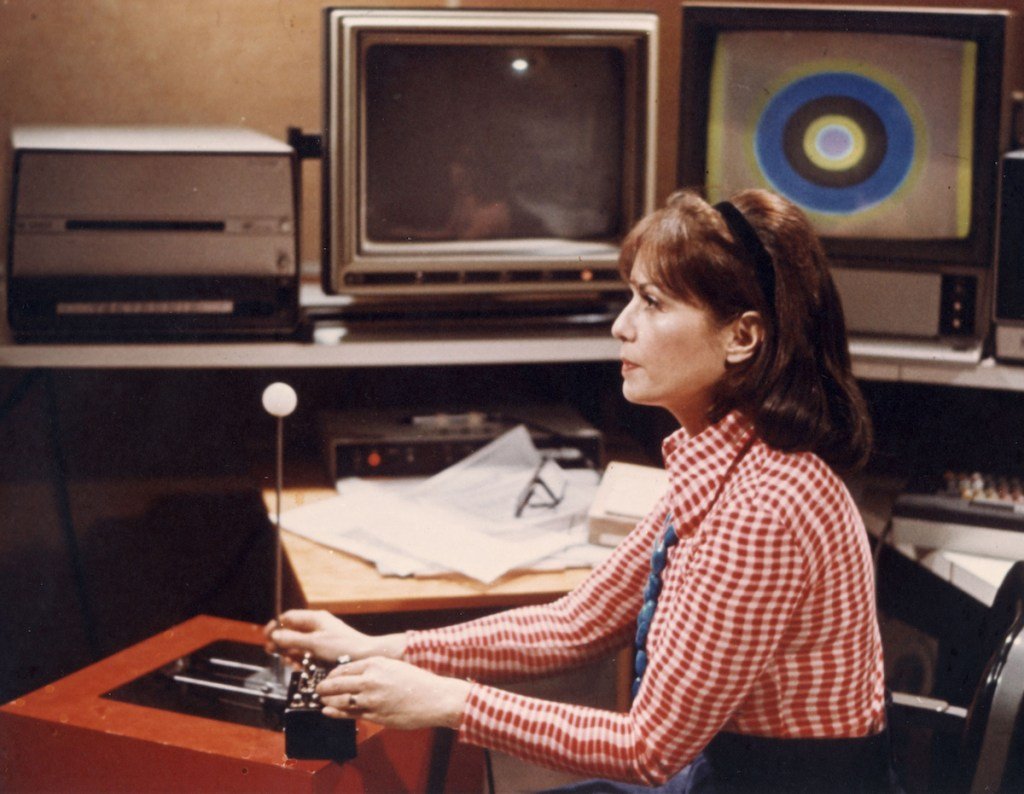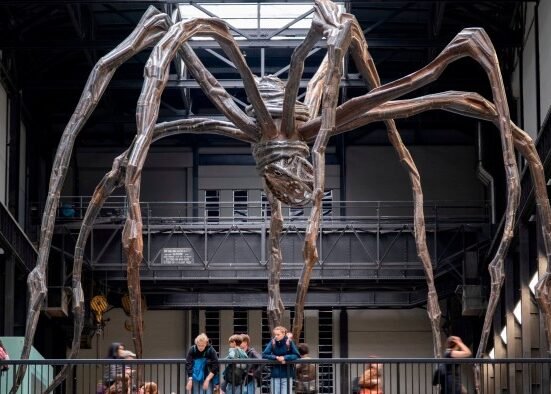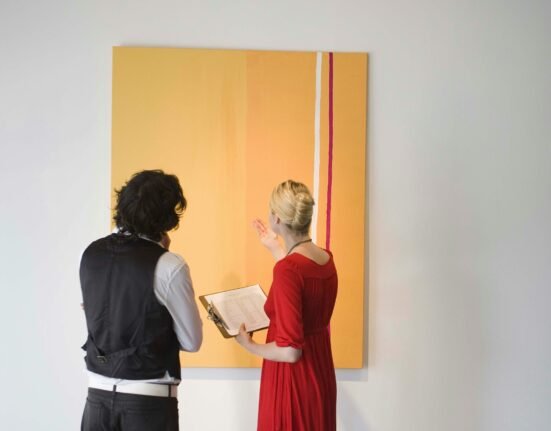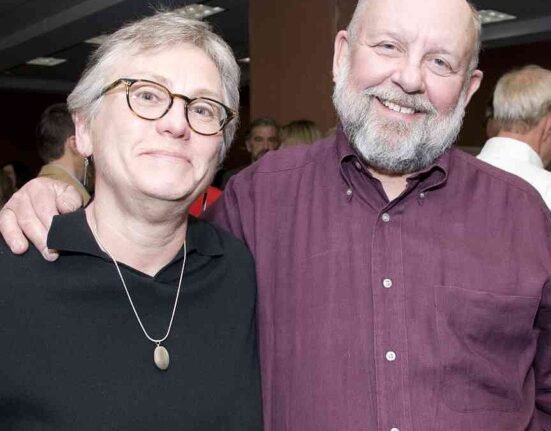Lillian Schwartz, an artist who found visually dazzling ways of using computers to move painting into the future, blazing new trails for many digital artists who came after her, has died at 97. Kristen Gallerneaux, a curator at the Henry Ford Museum, whose collection includes Schwartz’s archive, confirmed her death on Monday.
Schwartz’s films translated painterly styles into pixels, portraying warping forms and blinking grids using computer technologies. In that way, she found a means of injecting new life into the experiments being done on canvas by modernists during the first half of the 20th century.
Her achievements included becoming the first female artist in residence at Bell Labs and using computer technology to devise a new theory about Leonardo da Vinci’s Mona Lisa. She showed at mainstream institutions alongside many of her more famous male colleagues during the ’60s, and even made a name for herself for doing so—a rarity at the time for a female artist.
But until recently, although she has always been considered a core artist to the trajectory of digital art, she was not always been considered so important to the field of art more broadly. That has begun to change. In 2022, Schwartz was among the oldest participants in the Venice Biennale, where most of the artists were several generations younger than her.
She believed that computers could unravel the mysteries of the modern world, telling the New York Times, “I’m using the technology of today because it says what’s going on in society today. Ignoring the computer would be ignoring a large part of our world.”

Self Portrait by Lillian Schwartz, ca. 1979.
Henry Ford Museum, Gift of the Lillian F. Schwartz & Laurens R. Schwartz Collection
Lillian Feldman was born in 1927 in Cincinnati, Ohio. Her father was a barber, her mother, a housewife; she had 13 siblings. Her parents were poor and Jewish, and she recalled that antisemitism forced them to move to Clifton, a nearby suburb. But even there, Feldman and her family continued to face prejudice. Their dog was killed, with the phrase “Jew dog” painted on its stomach.
The horrors all around this family moved Feldman’s mother to allow her kids to stay home from school one day a week. During that time, Feldman made sculptures from leftover dough and drew on the walls of her home.
She helped support her family by taking a job at a dress shop in Newport, Kentucky, at age 13, taking the bus to get there on Saturdays. When she was 16, she entered nursing school and joined the US cadet nurse program, even though she recalled that she was “squeamish” and would sometimes faint in the presence of blood. One day, while working at a pharmacy, she met Jack Schwartz, a doctor whom she would later marry.
With him, she moved to US-occupied Japan in 1948. The following year, she contracted polio. While paralyzed, she spent time with a Zen Buddhist teacher learning calligraphy and mediation. “I learned to paint in my mind before putting one stroke on paper,” she once said. “I learned to hold a brush in my hand, to concentrate and practice until my hand no longer shook.”
Later on, she would say this was where she got the idea to create computer art: “Creating in my head proved to be a valuable technique for me years later when working with computers. In the beginning there was very little software and hardware for graphics.”

Lillian Schwartz with Proxima Centauri (1968).
Henry Ford Museum, Gift of the Lillian F. Schwartz & Laurens R. Schwartz Collection
During the ’50s, once she returned to the US, she studied painting, but once she learned the traditional methods, she quickly found a desire to part ways from them in the privacy of her own workspaces. Then, during the ’60s, she began creating sculptures formed from bronze and cement that she sometimes outfitted with laminated paintings and backlighting.
Her breakthrough came in 1968, when she showed the sculpture Proxima Centauri at the Museum of Modern Art exhibition “The Machine as Seen at the End of the Mechanical Age.” The sculpture, which was designed by Per Biorn, was composed of a plastic dome that appeared to recede into its base once viewers stepped on a pad that activated the work. Once it receded, the viewer would see patterns created by a hidden ripple tank that moved up and down. She had produced the work for a competition led by Experiments in Art and Technology, an initiative begun by Robert Rauschenberg and Billy Klüver, and now had achieved wider recognition for it.
Others beyond the art world began to take note. That same year, Leon D. Harmon, a researcher who specialized in perception and computer technology, had Schwartz come to Bell Labs, the New Jersey site where he worked. Thrilled by what she’d seen there, Schwartz began making work there—and continued to do so until 2002.

Lillian Schwartz, Pixillation (still), 1970.
Henry Ford Museum, Gift of the Lillian F. Schwartz & Laurens R. Schwartz Collection
She started to make films, translating a desire to make her sculptures move into celluloid. Pixillation (1970), her first film, contains images of crystals growing intercut with computer-generated squares that appear to pulse. Schwartz, who was obsessed with color, turned these digital frames red, causing them to appear the same color as the blooms in other shots. In doing so, she created a psychedelic experience that mirrored effects achieved in Stan Brakhage’s experimental films. She also established jarring contrasts between hard-edged forms and blotchy bursts, just as the Abstract Expressionists did in their monumental canvases.
Computer-generated imagery became more prominent with her second film, UFOs (1971), which was made from scraps of footage that went unused by a chemist studying atoms and molecules. Laser beams and microphotography became staples in future works.
While these are now considered significant works, Bell Labs’ leadership did not always appear to think so highly of Schwartz. Officially, she was not even an employee but a “Resident Visitor,” as her badge claimed.

Lillian Schwartz, Olympiad (still), 1971.
Henry Ford Museum, Gift of the Lillian F. Schwartz & Laurens R. Schwartz Collection
Yet the public seemed to embrace the fruits of her labor. In 1986, using software devised by Gerard J. Holzmann, Schwartz postulated that Leonardo had used his own image to craft the Mona Lisa, a discovery that was so intriguing, she was even interviewed by CBS about her studies. “Bell executives were livid and demanded to know why she wasn’t in the company directory,” wrote Rebekah Rutkoff in a 2016 essay on Schwartz for Artforum. “Almost two decades after her arrival, she received a contract and a salary as a ‘consultant in computer graphics.’”
In 1992, she used an image produced for her research on the Leonardo painting as the cover for her book The Computer Artist’s Handbook, which she wrote with her son Laurens.
That she wound up achieving such renown was inconceivable to Schwartz around two decades earlier. In 1975, she humbly told the New York Times, “I didn’t think of myself as an artist for a long time. It just sort of grew.”








